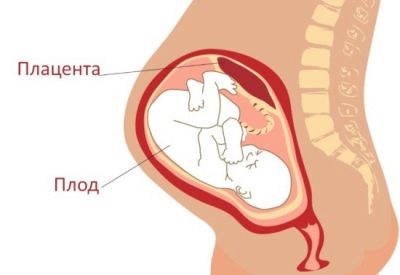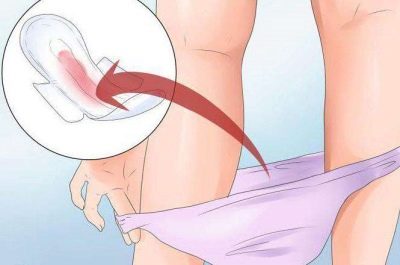What does central placenta previa during pregnancy mean and what does it affect?
The location of the placenta is of great importance during pregnancy. The intrauterine development of the fetus even depends on the location of the placenta. This article will help you to understand what is the central placenta previa and what this condition affects.
What is it?
Placental tissue appears in the immediate vicinity of the site of attachment of the chorion. This feature is due to nature. Through the placenta passes many arteries that provide full blood flow to the fetus. The system of the uteroplacental vessels in the child's body receives nutrients and oxygen. They are necessary so that a child who is in the womb quickly grows and develops.
The best place for implantation (attachment) of a fertilized egg is the area of the bottom of the uterus in the zone of the posterior wall. In this area, the most functional blood flow. If a small embryo is located in this zone, then its intrauterine development proceeds quite well. However, in medical practice there are other cases. For certain reasons, a fertilized egg can descend into the lower sections of the uterus, where it is subsequently attached. Such implantation largely leads to the fact that placental tissue is formed below.
To separate the norm from the pathology, doctors use a special conditional boundary. The benchmark for determining placenta previa is the distance from it to the internal uterine throat. Normally, in the second trimester of pregnancy, the distance from the pharynx to the placenta should be at least 5 cm. In the third trimester, it increases and is already 7 cm. If the placental tissue is far below this conditional boundary, then this condition is called the low position of the placenta. This clinical condition may aggravate the course of pregnancy.
Another dangerous clinical condition associated with too low placenta is previa. This pathology is characterized by the location of the placental tissue on the internal uterine throat. The degree of severity of violations in this case may be different. It depends largely on how much the placenta overlaps the internal uterine throat.
Doctors distinguish several types of placenta previa. One of the clinical options is the central presentation. In this pathology, the central part of the placenta enters the area of the internal uterine throat.
Features of the course of pregnancy
Central placenta previa can significantly complicate even the normal course of pregnancy. When establishing such a diagnosis, the future mother should carefully monitor her health. Usually, the first adverse symptoms appear by the middle of the second trimester of pregnancy. Subsequently, they can only increase. In some cases, it becomes too difficult to report a pregnancy. In this situation, the baby may appear much earlier than the prescribed period.
Bleeding from the genital tract may be one of the alarming symptoms characteristic of this pathology. Its severity is very different. In some cases, women notice only blood on their underwear. With severe bleeding, blood loss can be quite abundant. Bleeding from the genital tract can develop with or without the development of pain in the abdomen.It is important to note that such bleeding during the entire period of pregnancy may appear several times.
Quite often it happens that bleeding from the genital tract is the first symptom that causes a pregnant woman to seek advice from an obstetrician-gynecologist. Next, the doctor conducts a clinical examination, during which it is necessary to determine the location of the placenta. If necessary, an obstetrician-gynecologist will send the future mother to undergo an ultrasound. Ultrasound examination of the uterus and its appendages is necessarily carried out to all women with this pathology. It should be noted that the expectant mother will undergo an ultrasound a few more times over the entire period of carrying the baby.
Repeat ultrasound examinations are necessary. This helps doctors to track the dynamics of the development of this pathology.
It should be noted that by the third trimester of pregnancy the position of the placenta may change. If the placental tissue predominantly overlaps the internal uterine throat in the region of the anterior wall, then in this situation it is possible to shift it upwards. This process is called migration. Usually, the process of changing the initial position of the placenta takes several weeks.
Evaluate the migration of placental tissue finally possible only in the third trimester of pregnancy. Doctors necessarily determine the localization of the placenta immediately before childbirth. This allows obstetrician-gynecologists to choose the tactics of obstetric aid correctly.
Complications
The course of pregnancy complicated by central presentation can be quite unpredictable. At any time, future mothers may experience complications. Reviews of women who had a central placenta previa during pregnancy confirm this.
Bleeding from the genital tract with a central placenta previa may begin suddenly. In this case, a pregnant woman, as a rule, pours a lot of blood from the vagina, and her general condition deteriorates dramatically. Massive blood loss is an extremely dangerous condition. At this time, the uteroplacental blood flow is disturbed, which means that the baby is experiencing tremendous discomfort. If the blood loss is very massive, then in such a situation, the consequences for the child can be extremely unfavorable, even the threat to his life. In such a situation it is very important to quickly seek medical help.
If the condition of a pregnant woman and her baby has greatly deteriorated, then she must be hospitalized for treatment and compensation for the resulting disorders.
In some cases, blood loss can be frequent, but scant. Usually such situations occur when the expectant mother violates the recommendations made for her by the doctors. Bleeding can appear in this case after lifting heavy objects, as well as after playing sports.
Women who have a central placenta previa during pregnancy, in some cases, doctors may even recommend bed rest. The longer the period of pregnancy, the longer the expectant mother should rest. Intense physical exertion should be postponed for a while. Also, the expectant mother should monitor their psycho-emotional state. Strong nervous experiences and stress can have a negative impact on the course of pregnancy.
Tactics obstetric aid
Conducting pregnancy complicated by central presentation should be very attentive. It is better that a pregnant woman with this pathology should be supervised by an experienced and qualified doctor. During pregnancy, the future mother should immaculately follow all the recommendations of doctors. This will help minimize the risk of possible states for both her and her baby.
In the management of pregnancy, complicated by the central placenta previa, doctors are doing everything possible to keep it as long as possible. For the baby to be born and be viable, he needs to go through several stages of fetal development. This requires several months. If during such a complicated pregnancy, severe bleeding develops, the risk of spontaneous premature birth is very high. If childbirth begins too early, then it is extremely difficult for doctors to save the baby.
When pregnancy is complicated by central presentation, doctors usually resort to the surgical method of obstetrics. A cesarean section helps reduce the risk of developing dangerous complications that may develop during natural childbirth. The date of the delivery operation is always selected individually.
There are situations when the expectant mother enters the hospital much earlier than the due date of birth. This happens, as a rule, if the woman has started a massive bleeding. In such a situation, doctors necessarily evaluate the risk of the onset of preterm labor. If the opening of the cervix is incomplete, then they can leave the woman in the hospital for a while.
The choice of tactics in this case depends largely on the duration of pregnancy. If the gestational period is already sufficient for carrying out a delivery operation, then in this case the woman will undergo a cesarean section.
See the following video on what the central placenta presentation means.





















